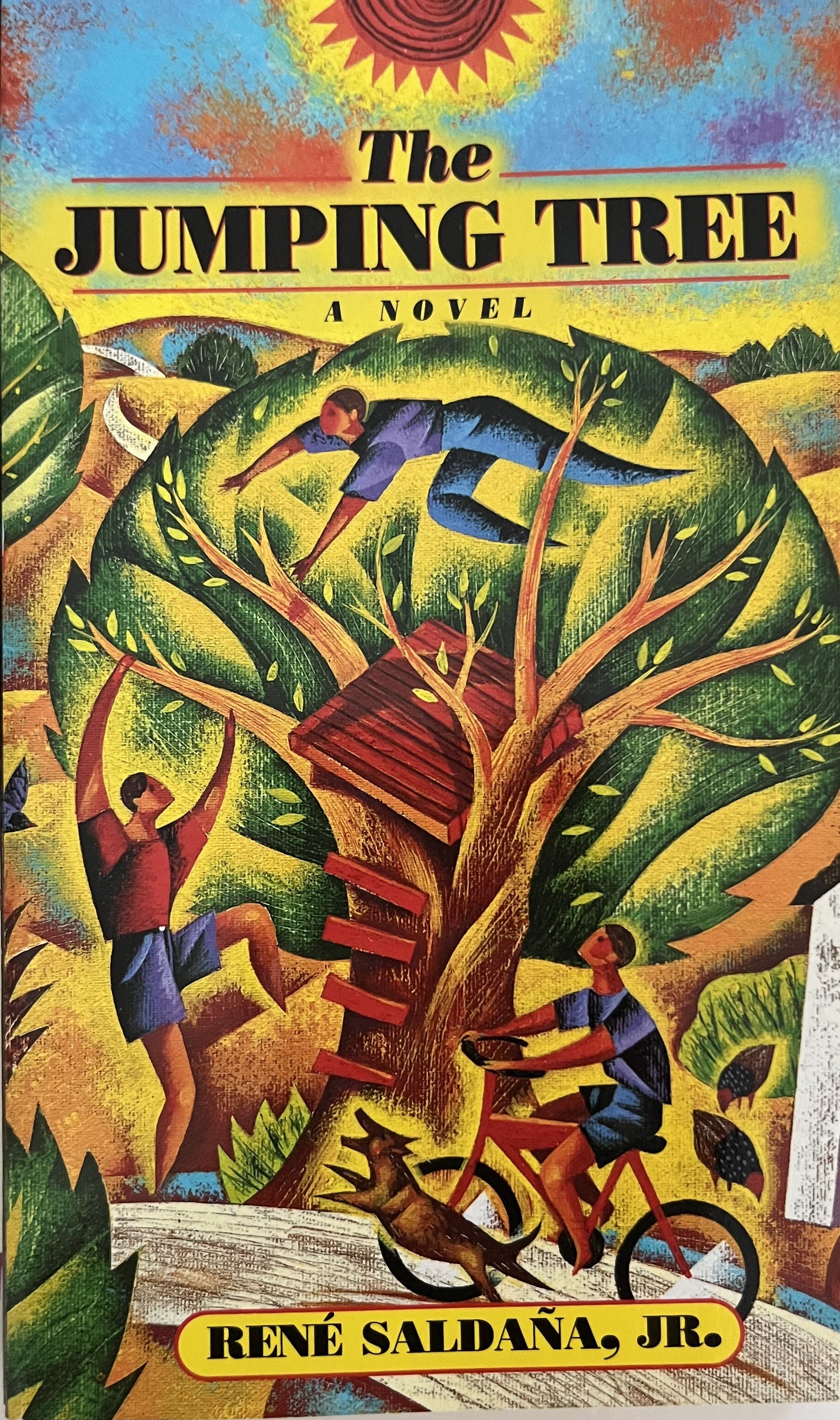Learning About Line Breaks
Several years ago, when I was a debut novelist, I spoke at an NCTE/ALAN conference, on a panel that also featured poet and professor, René Saldaña Jr. Before I met him, I read his autobiographical coming-of-age novel, THE JUMPING TREE. We met for a few minutes - and became fast friends. Today, he is a part of my writing family. I treasure my continued contact with him - and it was thrilling to be sent his novel in verse, EVENTUALLY, INEVITABLY: MY WRITING LIFE IN VERSE.
One of the things I love about this book is that it is in English AND Spanish. So if you’re fluent in both languages, a fun exercise to indulge in would be to take one of his poems, translate it, and see how close your translation is to the author’s.
I do speak other languages - but not Spanish. And here’s another fun writing prompt for those who may not be able to do a Spanish translation - as well as for those who do - an activity that helps us learn about line breaks.
One of the poems that jumped out at me immediately was entitled “ Visiting Polito, My Cousin, Always… A Good Time: A Self-Plagiarism. As the subtitle clarified, the words were “pinched” from THE JUMPING TREE.
It was a joy to savor the poem and then find the prose. And it made me think of line breaks, and what makes us decide to break a line in a specific way.
Have you ever wondered about line breaks?
Regardless of what you may or may not have studied about line breaks, try this playful exercise. Look at the text below, from EVENTUALLY, INEVITABLY - and create a poem out of it.
How did you create your poem from this poetic prose paragraph? Did you leave out anything? Did you use everything? How did you shape the lines - and why did you cut them where you did? Was there a thought process? Or did you go by feel?
Compare your poem to others in your writing group or writing classroom who did this exercise. How did their work / process differ from yours?
Remember, there’s no right or wrong. This is a playful exercise, that invites you to have fun with line breaks. Keeping that in mind, see what the poet himself did with his work - in the photograph below.
Why do you think he made the choices he did? What do you love about his choices?
All of us - at least all of us who love poetry - ponder the mysteries of line breaks.
I have a copy of LOCOMOTION, a National Book Award Finalist title by the living legend Jacqueline Woodson - and in the acknowledgements, she sends “a huge shout-out of thanks to all my friends who are poets, and especially Meg Kearny, who helped me enormously with line breaks…”
Locomotion is a beautiful book - as are all her books. Read it once for the story, and then read it again, slowly, for the poetry.
My dear friend Richard Blanco, for whom I have deep affection and admiration, once advised me that an important way to feel where a line ends is to read a poem aloud, pausing where the line ends - so you can actually hear the break in the line.
Reading aloud - to sense where one wishes to place a pause - is a wonderful and intuitive way to feel a poem. It’s a tip I use to revise a poem after I write it. I even read my verse novels aloud - and next week, I will be recording the audio for SAFE HARBOR - so you can be sure I will be paying attention to the musicality of sound that line breaks confer.
There are several excellent articles about line breaks. Here are two of my favorites:
https://www.poetryfoundation.org/articles/70144/learning-the-poetic-line
https://writers.com/line-breaks-in-poetry
Read as much as you wish about line breaks - but remember that in the end, poetry is about intuition and feel; it’s art from the heart, not (or at least not merely) science from the mind.
Padma Venkatraman is an award-winning author and the founder of Diverse Verse. Her poems have been published in Poetry and nominated for a Pushcart Prize. Padma’s second novel-in-verse, SAFE HARBOR, is available for pre-order at https://www.penguinrandomhouse.com/books/647197/safe-harbor-by-padma-venkatraman/ . "SAFE HARBOR is an exquisite verse novel by one of my favorite poets. I fell in love with each heartfelt page. The perfect blend of personal and STEM themes is truly amazing,” according to Margarita Engle, Newbery Honor winning author of The Surrender Tree & YPP Poet Laureate Emeritus. Kathryn Erskine, National Book Award winning author, Kathryn Erskine, says, "You do not read this book so much as experience it through images and feelings, curling up in its safe harbor and watching humans and animals face challenges, yet flourish, thanks to their tenacity, understanding and love. SAFE HARBOR is like entering a dear friend’s kitchen and sharing nourishing food…you’ll breathe in sweet mango and salt air, soak up the sounds of bamboo flute and harp seal, and, after a shiver of ocean spray, embrace the warmth of friendship and hope."







